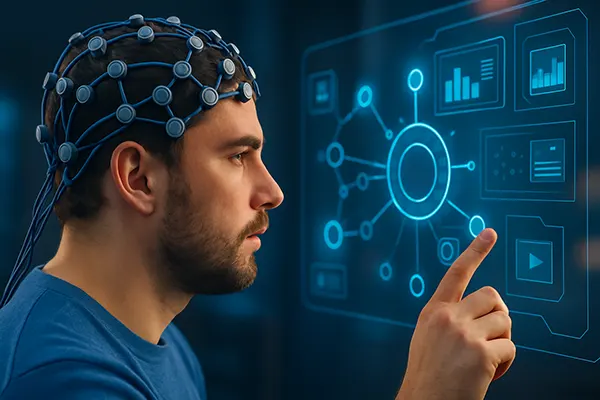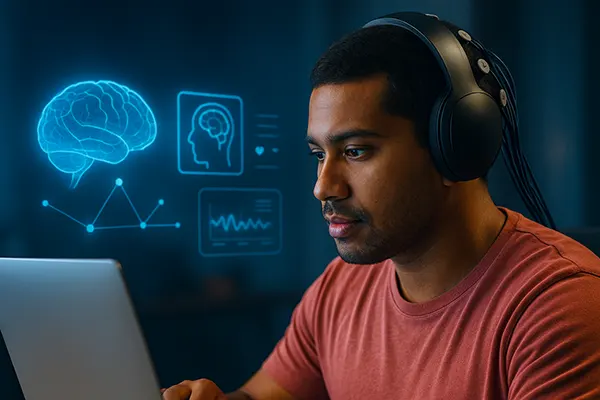
Neurovelocity: How Brain-Computer Interface (BCI) is Transforming Interaction with Digital Systems
The rapid evolution of brain-computer interface (BCI) technologies is no longer science fiction — it’s a technological frontier reshaping the way we communicate with machines. From assisting individuals with disabilities to redefining how we control digital environments, BCI is moving closer to mainstream implementation. As of mid-2025, several significant breakthroughs mark a new chapter in human-machine interaction, known as neurovelocity — the acceleration of communication between the brain and digital systems.
Redefining the Interface: What Neurovelocity Really Means
Neurovelocity refers to the speed and precision with which human thoughts can be converted into commands for digital systems using BCIs. Unlike traditional input methods like touchscreens or keyboards, BCIs aim to bypass physical motion entirely by interpreting brain activity directly. This creates a seamless and rapid form of interaction, especially useful in high-demand environments such as aviation, medicine, or gaming.
Leading developers like Neuralink, Synchron, and Precision Neuroscience have made tangible progress. For instance, in early 2025, a patient fitted with a Synchron implant was able to control a smartphone and text independently, using thought alone. This marks a shift from assistive technology to fully integrated communication systems that enhance digital productivity.
Modern BCIs now use non-invasive or minimally invasive techniques to record brain signals with improved resolution and minimal delay. EEG-based headsets and electrocorticography (ECoG) solutions allow users to interact with complex software without significant training, making the technology increasingly accessible.
Current Use Cases and Limitations
Today’s BCI applications are primarily found in healthcare, where patients with neurodegenerative diseases benefit from regained mobility and communication. For instance, BCI-driven robotic limbs and speech synthesizers have improved the quality of life for ALS and spinal cord injury patients.
However, widespread adoption faces hurdles: decoding brain activity accurately remains challenging, especially when it involves abstract or multi-step intentions. There are also ethical and regulatory concerns — from data privacy to long-term biocompatibility — that slow down mass integration.
Despite the obstacles, continuous improvement in AI signal processing and neuroimaging is steadily enhancing BCI reliability. Machine learning models are becoming better at filtering noise and predicting user intent in real time, which is essential for broader applications outside clinical environments.
Next-Gen BCI: From Research to Consumer Markets
By mid-2025, the push to bring BCIs to the consumer market is gaining traction. Companies are designing headsets for everyday tasks like browsing the internet, controlling smart home devices, and even composing emails. The focus is on ergonomics, accuracy, and affordability — three pillars essential for user acceptance.
One of the more promising consumer-grade developments is the hybrid BCI, which combines EEG input with eye tracking or muscle sensors to increase accuracy and reduce false commands. This approach bridges the gap between pure neural input and practical usability for everyday tasks.
Meanwhile, open-source communities and academic labs are working to democratise access to BCI hardware and software. Projects like OpenBCI offer kits that enable developers and researchers to create customised neurointerface applications, speeding up innovation in the space.
Key Industries Poised for Transformation
Healthcare remains the core domain, but other sectors are now seeing the potential of neurovelocity. In gaming, BCI-controlled environments offer immersive, latency-free control. Professional eSports teams are even exploring cognitive input as a performance enhancer.
In education, BCIs may help detect learning difficulties in real-time or adjust content dynamically based on attention levels. Teachers can receive neural feedback on student engagement without invasive testing or subjective observation.
Meanwhile, industrial applications — such as drone piloting, robotic control in hazardous zones, and surgical robotics — are benefiting from hands-free, high-speed interfaces that reduce response time and human error.

Future Horizons: What to Expect Beyond 2025
As BCI hardware becomes more compact and algorithms more precise, the technology is on track to blend invisibly into daily life. In the next few years, we may see consumer-grade wearables embedded in standard eyewear or earbuds, allowing neural input on-the-go without drawing attention.
Cloud integration is another major milestone. Imagine controlling your digital workspace, managing tasks, and searching information using neural commands synced across your devices. Neurovelocity opens the door to a digital experience where interface lag becomes obsolete.
At the same time, ethical frameworks must evolve. Societal discussions around “neural rights” — the right to mental privacy, the right to cognitive liberty — are crucial as we embed BCI into everyday life. Regulatory bodies are beginning to address these issues, but a global consensus is still needed.
Challenges That Still Remain
Data protection is at the forefront of BCI debates. Brain data is highly personal, and its misuse could lead to unprecedented privacy violations. Unlike a password or fingerprint, neural signatures cannot easily be changed if compromised.
There is also a gap in universal standards. With multiple players developing proprietary protocols, interoperability becomes an issue. Without standardised data formats and APIs, devices from different vendors may struggle to communicate efficiently.
Lastly, cost and accessibility remain barriers for many. Even with open-source kits, the average user may find setup and calibration overwhelming. Solving this will require more intuitive user experiences, community support, and clearer training protocols.